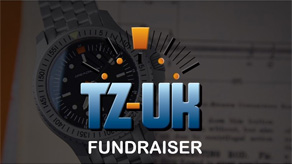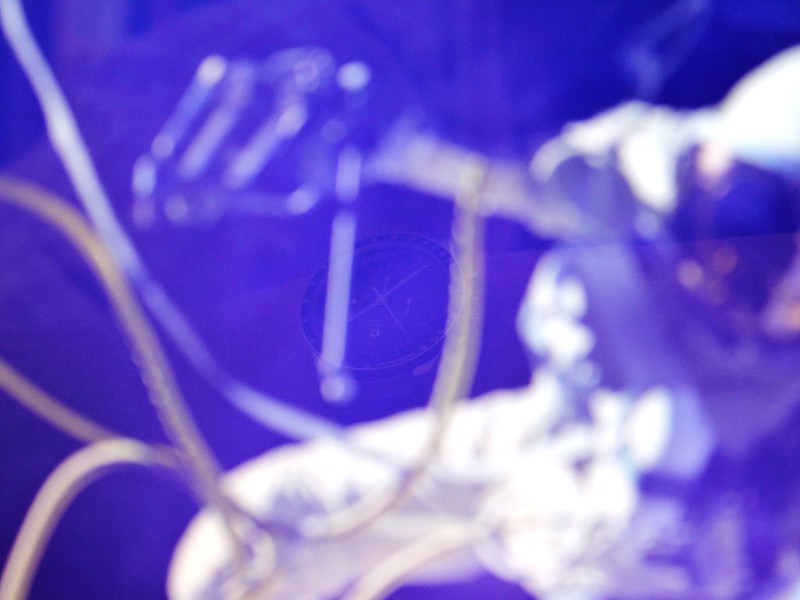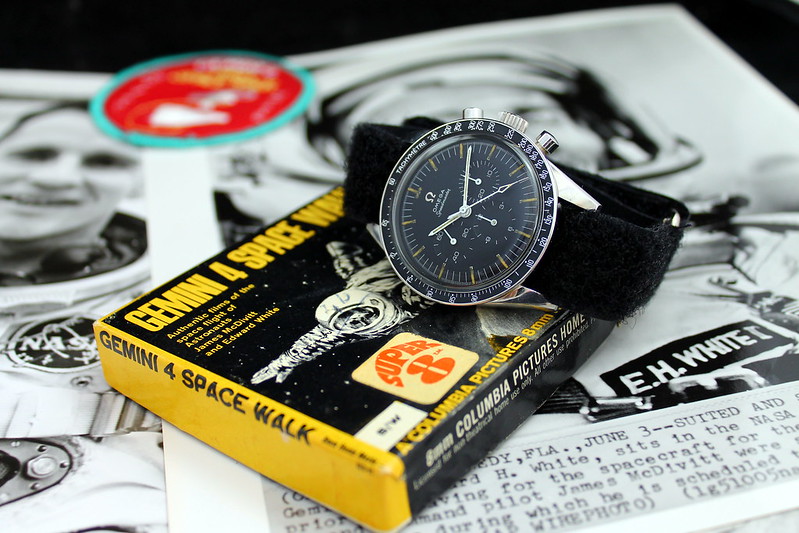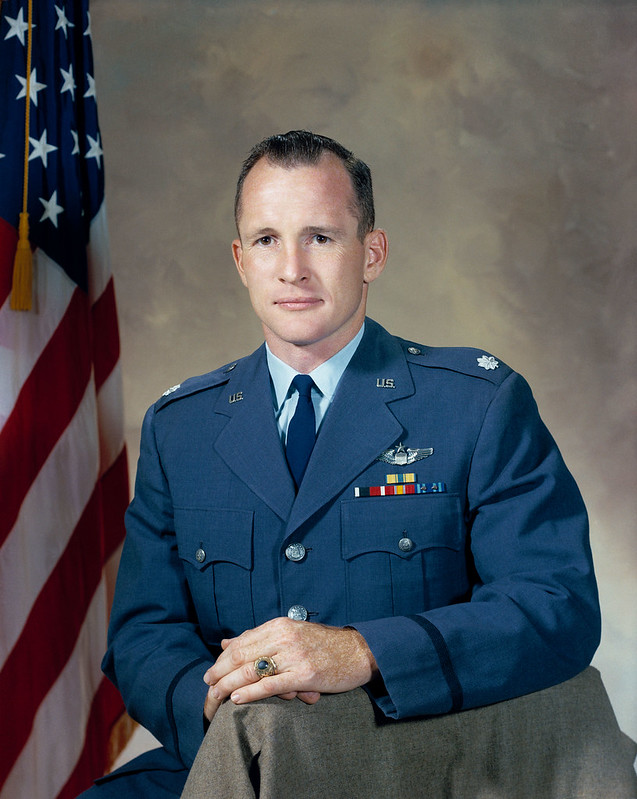Ed White Speedmaster - a history of the watch, the man and the mission... Part One
by , 8th September 2013 at 21:51 (3158 Views)
The saddest day of my life...
There are watches that become intrinsically linked with the people that wore them, some real people, some fictional characters... ‘Paul Newman’ Daytona, ‘Steve McQueen’ Explorer, Seiko ‘Arnie’ or the ‘Capt Willard’ 6105 to name but a few. Then there are the watches that are linked to the activity they are associated with – most famously of course being the Omega Speedmaster ‘Moonwatch’.
My personal favourite however, is the ‘Ed White’ Omega Speedmaster 105.003. There can’t be many people for whom the history of space exploration does not hold some level of fascination, especially those who, like me, are technically minded and also interested in horology. I am aware that some people really don’t like watches being given nicknames and much prefer the official reference numbers to be used, but with the long awaited arrival with me today of a very fine example, I thought I would summarise the relevant history of this particular model, its place in Speedmaster mythology and the man and mission that provided the Ed White association...
Somewhat overshadowed by the whole Speedmaster Moonwatch, ‘First Watch Worn on the Moon’ phenomenon, the Ed White Speedmaster has a significant role in the back story to the Speedmaster and its space connections. Its story also has elements of extreme bravery, technological breakthrough and personal tragedy resulting in the most ultimate sacrifice that can be made in the pursuance of science and space exploration.
The Pre Mooon Speedmaster in Space
Before the moon landing in 1969 there was already a growing connection between the Speedmaster and space.
The first Speedmaster in space was a CK2998 worn by astronaut Walter M Schirra Jr in October 1962 during the Mercury-Atlas 8 (MA-8) mission, this was Wally Schirra’s personal watch and the Speedmaster clocked up its first 9hrs 13mins 11secs of space time.
The Speedmaster flew again seven months later on the final Mercury mission (MA-9) when Gordon Cooper became the first American in space for over a day, the mission lasting 1day 10hrs 19mins 49secs. Interestingly, Cooper also wore a Bulova Accutron, (not a chronograph, but powered by the then very new electric movement technology) in order to compare performance in space – perhaps the very beginning of the selection process. During this mission, Cooper used his Speedmaster, (another CK2998) to time the firing sequence during re-entry – the first ‘Professional’ application for the Speedmaster in space...
It must have become clear to NASA that a personal timing device was essential for future missions and that this must meet a number of reliability criteria – the search for a watch suitable for use in the upcoming Gemini missions commenced...
It is well documented that NASA purchased from a high street jewellers near to the space center in Houston a wide range of chronographs originally selected for testing, including those from Elgin, Benrus, Hamilton, Mido, Piccard, Omega, Bulova, Rolex, Longine and Gruen. However, it was only the Longines Wittnauer, Rolex Daytona and Omega Speedmaster that went on to be subjected to a series of pretty gruelling series of tests including decompression, acceleration, zero G exposure, severe shock, vibration and extreme temperature differentials.
This resulted in, on the 1st March 1965, the Omega Speedmaster being selected by NASA to be the only watch officially qualified for space flight. (Most likely the watch tested would have been a 105.012 Speedmaster model.)
The Gemini Project
The Gemini missions were commissioned in support of the ultimate charter from John F Kennedy to put a man on the moon, originally titled Mercury II the programme was introduced in December 1961. The project was quickly and aptly renamed Gemini in January 1963, Gemini meaning twins and the newly designed spacecraft having a two man crew.
The mission objectives were intended to test and prove a number of factors that would be essential to the proposed Apollo missions, already in the early planning stage:
- To demonstrate endurance of humans and equipment to spaceflight for extended periods, at least eight days required for a Moon landing, to a maximum of two weeks
- To effect rendezvous and docking with another vehicle, and to manoeuvre the combined spacecraft using the propulsion system of the target vehicle
- To demonstrate Extra-Vehicular Activity (EVA), or ‘spacewalk’ outside the protection of the spacecraft, and to evaluate the astronauts' ability to perform tasks there
- To perfect techniques of atmospheric re-entry and landing at a pre-selected location
- To provide the astronauts with zero-gravity, rendezvous, and docking experience required for Apollo
All in all, sixteen astronauts, (including both Neil Armstrong, G-IIX and Buzz Aldrin, G-XII) flew in ten manned Gemini missions, (the first two missions being unmanned).
Cutaway view of the Gemini spacecraft that took Ed White and Gus Grissom into space during Gemini IV (Photo NASA)
Gemini III was a manned vehicle test flight by astronauts Grissom and Young and blasted off on 23rd March 1965 atop the Titan II launch rocket for three orbits of earth, total mission time 4hr 52mins 31secs.
Gemini IV, to be flown by Command Pilot James A McDivitt and Pilot Edward H White II was scheduled for launch on the 3rd June 1965 at 1515GMT...
Gemini IV, Ed White and the first US EVA
Edward H White II was born into a military family, (his father was a US Air Force major General) who graduated West Point in 1952 with a BSc and a commission into the USAF. Flight school followed West Point on completion of which he was posted to the 22nd Fighter Day Squadron flying F86 Sabre and F100 Super Sabre fast jets for three and a half years.
Edward H White II (Photo NASA)
In 1958 Ed White commenced a Masters Degree in Aeronautical Engineering under an Air Force scholarship and on graduation was selected to join the Test
Pilot School and subsequently became a test pilot posted at Wright Patterson AFB. This was the astronaut breeding ground...
By 1962 he had been selected as a Gemini astronaut and assigned to the historic Gemini IV mission.
One of the key mission objectives for G-IV was to complete the first US Spacewalk, (the first man to carry out a spacewalk was Soviet Aleksei Leonov on Voskhod 2 only a few months earlier in March 1965 – but is thought that he did not wear a watch, at least not outside of his protective suit).
The G-IV spacewalk was originally intended to be completed during the second revolution, but the crew decided to postpone after a failed mission task to rendezvous with the spent second stage of their launch vehicle.
By the third revolution they were good to go, the crew prepared themselves, the spacecraft cabin was de-pressurised and over Hawaii and McDivitt turned the hatch handle...
/cont...












